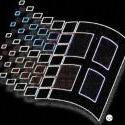In your opinion, what are the best/worst versions of Microsoft Windows?
Best and Worst Windows Versions
70 members have voted
-
1. In your opinion, what is the worst version of Microsoft Windows?
-
Windows NT 3.1-3.5 (please specify in comments)
-
Windows NT 3.51
-
Windows NT 4.0
-
Windows 20000
-
Windows XP
-
Windows Server 2003/XP x64
-
Windows Vista
-
Windows 7
-
Windows 8
-
Windows 8.1
-
Windows 10
-
Windows 1.0-3.11 (please specify in comments)
-
Windows 95
-
Windows 98
-
Windows Me
-
-
2. In your opinion, what is the best version of Microsoft Windows?
-
Windows NT 3.1-3.5 (please specify in comments)0
-
Windows NT 3.51
-
Windows NT 4.0
-
Windows 2000
-
Windows XP
-
Windows Server 2003/XP x64
-
Windows Vista
-
Windows 7
-
Windows 8
-
Windows 8.1
-
Windows 10
-
Windows 1-3.11 (please specify in comments)
-
Windows 950
-
Windows 98
-
Windows Me
-
-
Recently Browsing 0 members
- No registered users viewing this page.


Recommended Posts
Create an account or sign in to comment
You need to be a member in order to leave a comment
Create an account
Sign up for a new account in our community. It's easy!
Register a new accountSign in
Already have an account? Sign in here.
Sign In Now